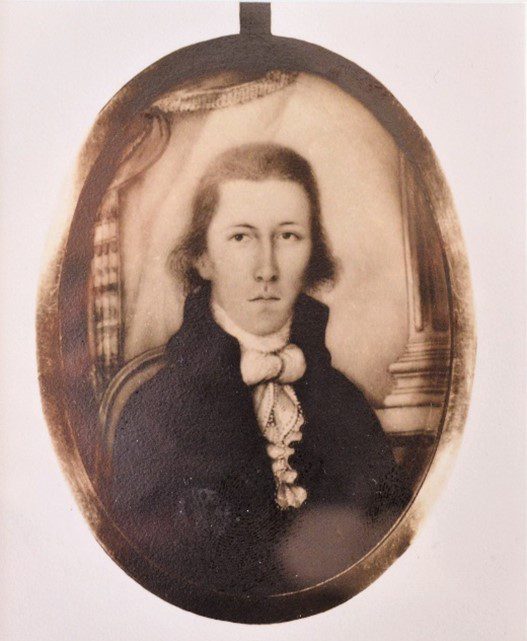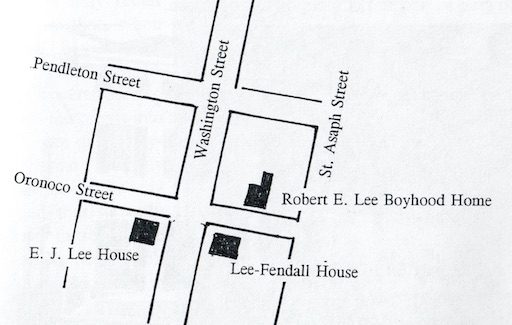The Legacy of a Distinguished Lee: Edmund Jennings Lee I’s Impact on Law and Society.

Early Life and Family Heritage
Edmund Jennings Lee I, a beacon of legal prowess and civic dedication, emerged from the illustrious Lee family of Virginia. Born on May 20, 1772, his roots traced back to a lineage deeply entrenched in the state’s history. His remarkable journey would encompass not only legal acumen but also a profound influence on the cultural and societal fabric of Alexandria, Virginia.
Ties That Bind: Marriage into Renown
In 1796, Edmund Jennings Lee I’s life took a significant turn as he married Sarah Lee, daughter of the renowned Richard Henry Lee. This familial connection linked him to a distinguished representative from Virginia who played a pivotal role in advocating for the colonies’ emancipation from British rule. Richard Henry Lee’s groundbreaking proposal laid the cornerstone for the birth of independent states, setting the stage for a nation’s destiny.
A Home Steeped in History
In November 1828, Edmond Jennings Lee acquired the Lee-Fendall House through a public auction. This historic property had previously belonged to his older sister, Mollie, who was the third wife of Phillip Fendall Lee. Unfortunately, Mollie had passed away in 1827, and the house was put up for sale to settle her outstanding debts. At the time of this acquisition, Edmond and his family resided across the street at 428 North Washington Street.
Taking up residence in the venerable Lee-Fendall House, Edmond Jennings Lee I and his family left an indelible mark on Virginia’s rich historical tapestry. The reverberations of their lives within these hallowed walls would continue to influence generations to come.

Trials and Triumphs: Financial Hardships and Resilience
Edmund Jennings Lee I’s life was not without its challenges. Financial difficulties led to the sale of their cherished home in 1833. Yet, through the unwavering support of their son, Edmund Jennings Lee II, the family found their way back to the Lee-Fendall House. The resilience of the Lee family shone through, illustrating the strength of their bonds.
A Journey of Civic Duty
Lee’s commitment to his community manifested in his involvement in local governance. Elected to represent the third ward in the Alexandria Common Council in 1809, he embarked on a journey of civic duty that would leave an indelible mark.
Leading the Council
In 1810, Lee ascended to President of the Common Council. His leadership was marked by his dedication to the community’s well-being and his resolve to uphold values that mattered to him.
Mayor of Alexandria
March 1815 saw Lee’s elevation to the role of Mayor of Alexandria. His three-year tenure was characterized by a steadfast commitment to prudent fiscal policies and a resolute stance against gambling, even when it involved individuals he knew personally. His unwavering integrity shone through during this pivotal period.
Legal Contributions
Lee’s commitment to civic service extended to the legal realm. His appointment as the Clerk of the Circuit Court for Alexandria County in 1818 marked the beginning of his invaluable contributions to the legal infrastructure of the region.
Beyond the Call of Duty: Community and Religious Contributions
Lee’s impact on his community transcended legal and public service. His involvement in Christ Church’s vestry demonstrated his dedication to the spiritual well-being of the people he served.
Educating the Future
Edmund Jennings Lee I’s commitment to education was evident through his appointment to the Board of Trustees of the Alexandria Academy. This venerable institution, with roots dating back to 1785, held a special place in Virginia’s educational landscape.
Advocate of Change
Lee’s progressive spirit was evident in his support for the American Colonization Society, an organization aimed at improving the lives of free Blacks by advocating for their repatriation to Africa. His support for this cause showcased his dedication to societal improvement.
A Lasting Legacy
As the chapters of Edmund Jennings Lee I’s life unfolded, his multifaceted contributions left an indelible mark on the fabric of Alexandria. His legacy, etched in history and memory, continues to inspire generations to strive for a better society. In his final resting place in Lot 4:4, Lee’s influence lives on, a testament to the enduring impact of a life devoted to the betterment of all.
| EDMOND J. LEE died 30th May 1843 aged 71 years, 10 days My flesh shall rest in hope |
Sources of Information
The Alexandria Association. (1956). Our Town 1749 – 1865. At Gadsby’s Tavern Alexandria, Virginia. The Dietz Printing Company.
Lee, Jr., Cazenove Gardner. (1957). Lee Chronicle Studies of the Early Generations of the Lees of Virginia. Published for The Society of the Lees of Virginia by Thomson-Shore.
Pippenger, Wesley E. (1992). Tombstone Inscriptions of Alexandria, VA (Volume 3). Family Line Publications.